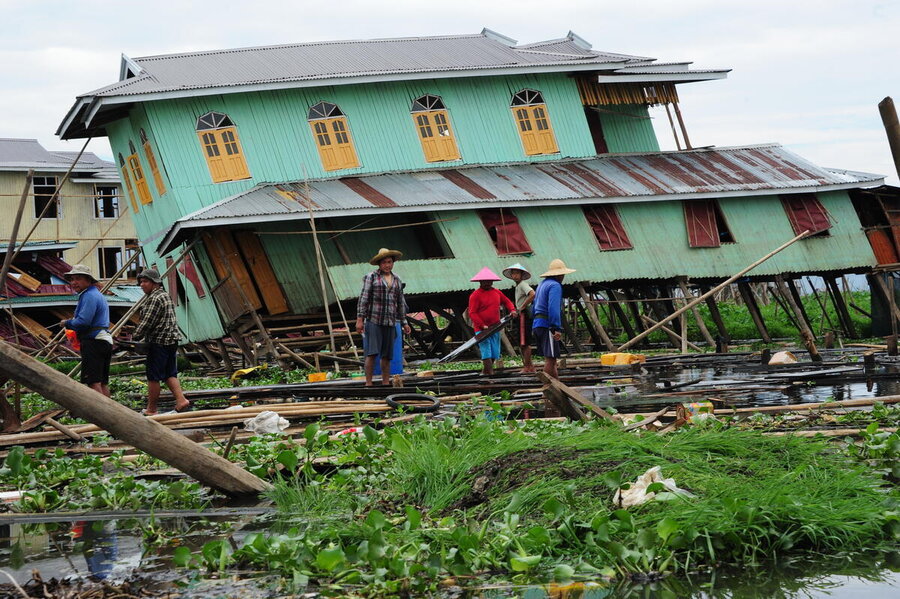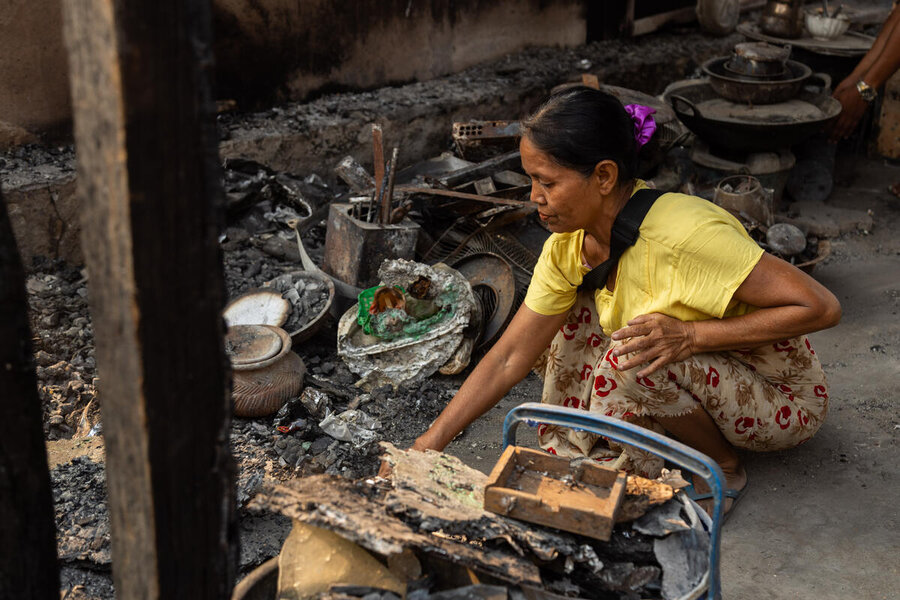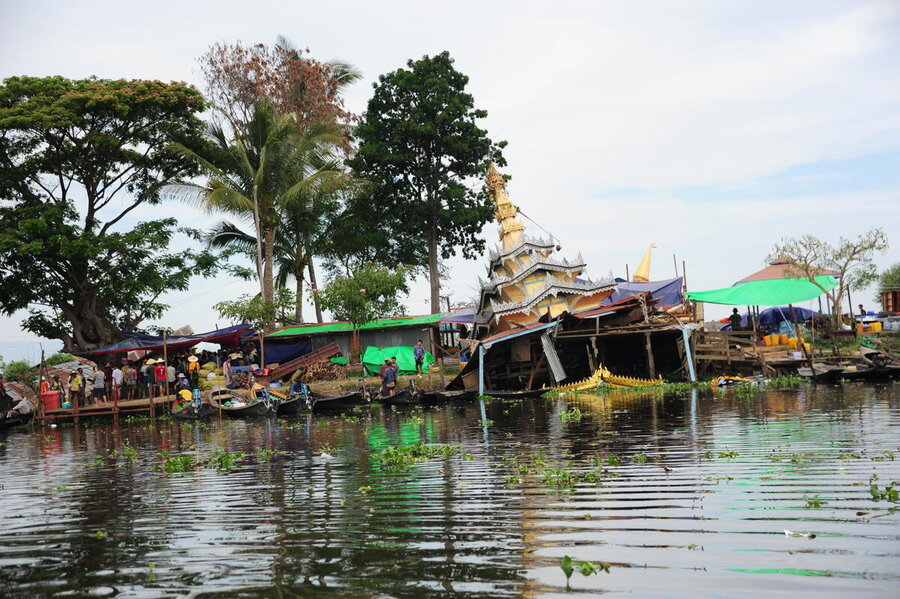Myanmar earthquake: Race to stem the aftershock of hunger amid monsoon fears

Donate to help save lives in Myanmar
“The monsoon is coming – that’s a ticking clock on everything – if you think the earthquake was one static disaster, you have rains adding pain to misery when people barely have a plastic sheet over their head,” says Sudip Joshi, the World Food Programme (WFP) Team Leader for WFP’s emergency response in the Mandalay area in Myanmar.
Then you have the aftershocks - “slow killers, more houses becoming unstable, more families losing what little they had every day.”
Since the deadly earthquake of 28 March, WFP has reached 127,000 people with close to 400 metric tons of food.
“Every day, there’s a new challenge,” Joshi adds. “One day, it’s unseasonal rain that disrupts most of our planned food distributions; the next, it’s trying to find any safe hotel to accommodate incoming surge staff when hotel facilities are limited but aftershocks are more regular.”

That’s when you try to operate with “two phones and four SIM cards, but still, you have comms blackout in many parts of the area to reach your colleagues and partners when you leave the office”.
Still, WFP reached over 100,000 people in just 10 days – “four days faster than planned – and we are operating from Mandalay, where we didn’t have an office base when we arrived on 31 March. We were fortunate to have other UN agencies here, though; we leaned on their offices, worked from their kitchen and storage rooms.”
Distributions of emergency food assistance started in Nay Pyi Taw within 48 hours of the earthquake, and have since expanded into Sagaing, Shan and Mandalay – part of Myanmar’s Dry Zone, where longstanding armed conflict continues to rage.
The area has long been affected by chronic poverty, ongoing conflict and frequent displacement. In the past four years alone, Sagaing has seen the majority of displacement in Myanmar, with more than 1.2 million people forced to flee their homes.

“There are places we haven’t been able to reach yet in the first two weeks, in the remotest areas due to operational constraints, some due to access, some to insecurity but we will get to these people soon,” says Joshi. “We will not leave anyone behind, especially those who need our support the most.”
Survivors’ needs far exceed available humanitarian resources, and delivering aid is particularly difficult in conflict-affected areas where communities are still reeling from September’s Typhoon Yagi and the floods that followed.
“We have to negotiate access for every single location – and it’s not just the checkpoints, it’s also the time you have to spent to build trust and network,” says Joshi. “Everyone wants to know who you are, who your partners are.”
Despite poor connectivity and transport constraints, WFP is building trust by the day.
Logistical access will become more challenging during the monsoon. Currently, the bridge crossing from Mandalay to Sagaing, another region severely affected by the earthquake, is already partially damaged, Joshi says. "WFP has to move food on river barges now.”
The earthquake brought the total number of people in need to 6.3 million in 58 earthquake-affected townships – of these, 1.8 million are prioritized for targeted humanitarian assistance

WFP has deployed 76 frontline personnel to support the earthquake response.
Distributions started with the most vulnerable – people living with HIV, TB, and people already displaced by the conflict – and involved some heartbreaking decisions.
“There were moments when we had to decide, ‘Do we serve 5,000 people in the city or 1,000 in a more remote area who haven’t received anything?’ That’s not a spreadsheet decision, it’s a human one” - informed by available data from partners, authorities and affected communities.
Daw Nwet Yi, a Mandalay resident in her fifties, says the earthquake weakened her home. “We need absolutely everything. Our whole family is just sleeping on a mat on the ground by the side of the road.”
She adds: “We’re relying on the biscuits and meal boxes handed out. “My kids go and get them, but I can’t. So my daughter and son collect them for me.”
Her biggest worry – that “another quake will hit, and the house will just collapse” – keeps her from returning home.

“My neighbour’s child died right in front of their home (after a wall collapsed),” she says. “The kids were just playing, not knowing an earthquake was coming. I saw them die. That’s why I’m so terrified.”
Joshi recalls speaking to a woman who said she was displaced last year due to conflict and now lost her rented house and everything she had left with the earthquake.
This is what he calls the inequality of this earthquake: “The poorest living in the margins of the city, in densely packed areas and in the remotest parts of country affected by the ongoing conflict, who have lost their shelters, will need support to put food in their tables for many months ahead .”
WFP needs US$40 million to meet the needs of the most vulnerable people over the next three months.
“We’re sprinting every day, but the race has no finish line,” says Joshi. He adds: “This crisis was already forgotten before the earthquake. We’re trying to make sure it doesn’t stay that way.”

